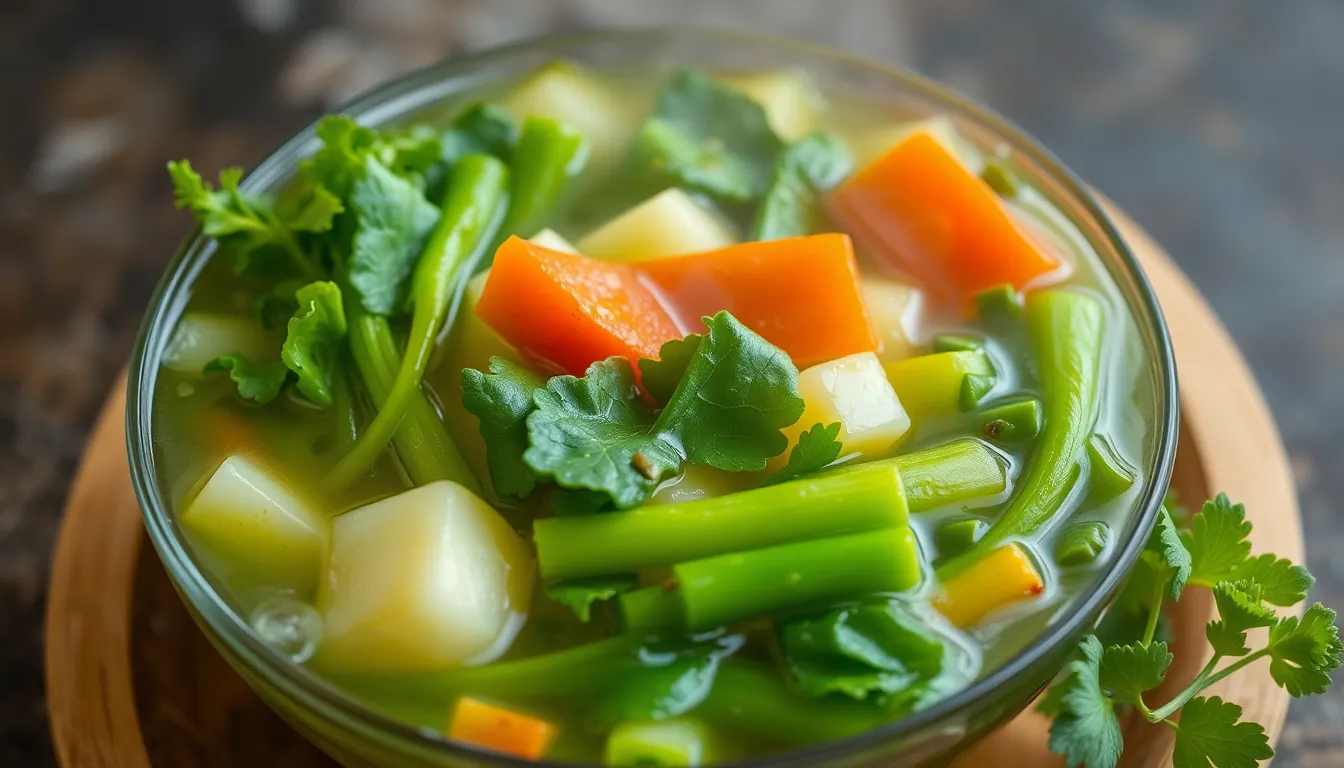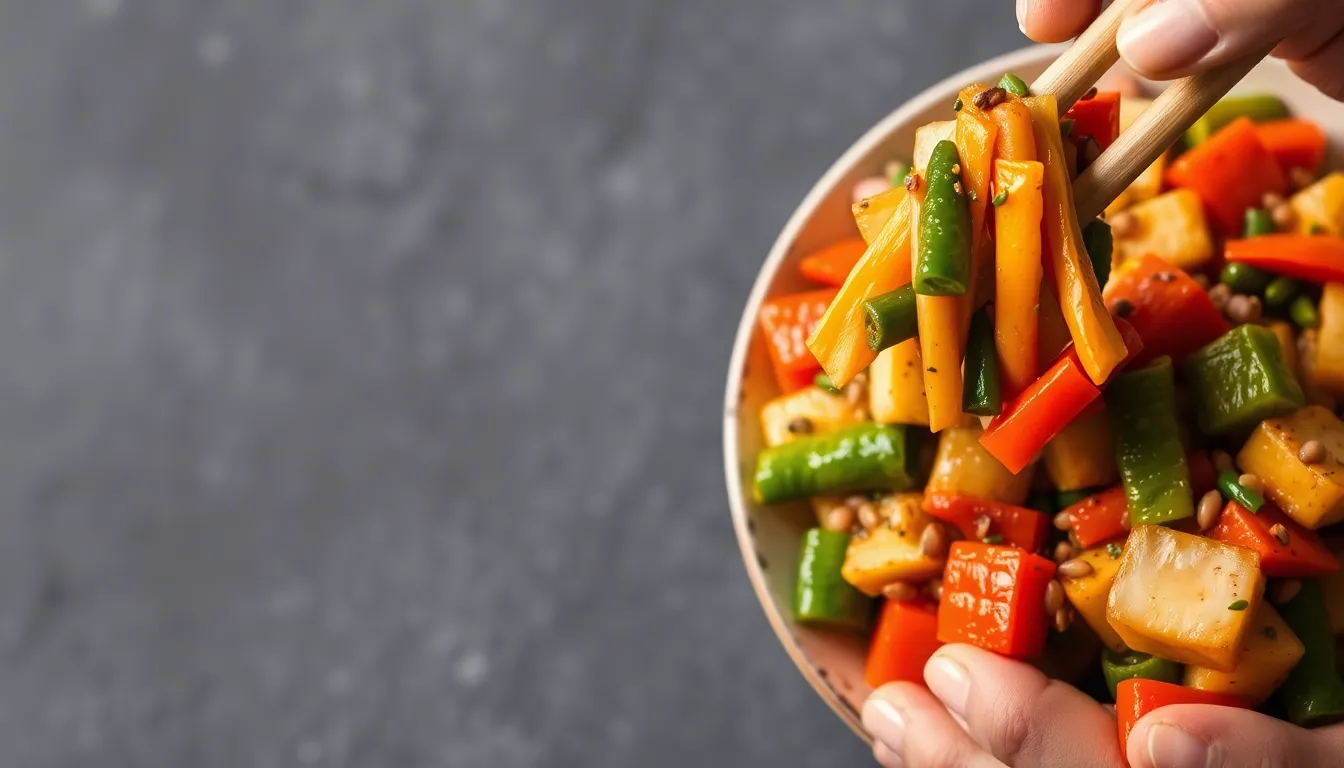Poaching Vegetables: A Healthier Cooking Method
Introduction
When it comes to preparing vegetables, the method of cooking can significantly impact both their taste and nutritional value. Among the various cooking techniques available, poaching stands out as a gentle, effective way to retain the natural goodness of vegetables. This blog post delves into the art of poaching, a method that not only preserves flavors and nutrients but also offers a variety of health and environmental benefits.
As our understanding of nutrition evolves, so too does the importance of cooking methods that maintain the integrity of our food. Poaching, often seen as a culinary secret, is a fantastic technique that allows vegetables to shine without the addition of excessive fats or oils.
In this article, we will explore what poaching is, its benefits, a step-by-step guide to the poaching process, and some delectable recipes that highlight poached vegetables. Let’s dive in!
Section 1: What is Poaching?
In culinary terms, poaching refers to the cooking of food in a simmering liquid, typically water, broth, or wine. The temperature of the liquid is generally kept between 160°F to 180°F (71°C to 82°C), ensuring gentle cooking without boiling.
Unlike boiling, where food is submerged in bubbling water, poaching allows for a more controlled cooking environment. This method not only produces tender vegetables but also helps retain their vibrant colors and essential nutrients.
Section 2: Benefits of Poaching Vegetables
Health Benefits
- Retention of Nutrients: Poaching vegetables helps preserve vitamins and minerals that can be lost through other cooking methods.
- Lower Fat Content: Since poaching does not require added fats, it is a healthier choice for those looking to reduce their fat intake.
- Enhances Natural Flavors: The method allows vegetables to cook evenly, enhancing their natural flavors without overwhelming them with heavy seasonings.
Environmental Benefits
Poaching consumes less energy compared to boiling, making it a more sustainable option for the environment. Using just enough liquid to cover the vegetables means less water waste and reduced energy usage.
Practical Benefits
- Quick and Easy Preparation: Poaching is a straightforward cooking method that requires minimal equipment and time.
- Versatility in Flavors and Seasonings: The poaching liquid can be flavored with various herbs and spices, allowing for creativity in taste profiles.
Section 3: The Poaching Process
Step-by-Step Guide
1. Choosing the Right Vegetables
Before you begin poaching, it’s essential to select vegetables that are best suited for this method. Here are some ideal candidates:
- Carrots
- Asparagus
- Broccoli
- Zucchini
- Peas
2. Preparing the Ingredients
Once you’ve chosen your vegetables, it’s time to prepare them:
- Clean the vegetables thoroughly to remove any dirt or pesticides.
- Cut them into uniform sizes to ensure even cooking.
- Smaller pieces will cook faster, so adjust the sizes accordingly.
3. Preparing the Poaching Liquid
The choice of poaching liquid can greatly influence the final flavor of your vegetables. Here are some popular options:
- Water
- Vegetable broth
- Chicken broth
- White wine
To elevate the flavor further, consider adding:
- Herbs (such as thyme, basil, or parsley)
- Spices (like black peppercorns or chili flakes)
- Citrus (lemon or lime slices)
4. Poaching Technique
Here’s how to poach your vegetables effectively:
- In a suitable pot, combine your chosen poaching liquid with any flavor enhancers.
- Bring the liquid to a simmer over medium heat.
- Gently add the prepared vegetables to the pot.
- Cover, allowing the vegetables to cook gently until tender.
- Use a slotted spoon to remove the vegetables when cooked.
HTML Table: Cooking Times for Poached Vegetables
| Vegetable | Cooking Time (minutes) |
|---|---|
| Carrots (sliced) | 3-5 |
| Asparagus | 3-5 |
| Broccoli florets | 4-6 |
| Zucchini (sliced) | 3-4 |
| Peas | 2-3 |
Section 4: Flavoring Your Poached Vegetables
To make your poached vegetables even more delightful, consider experimenting with different herbs and spices. Here are some suggestions to enhance the flavor:
- Fresh dill can add a refreshing taste to asparagus.
- A sprinkle of smoked paprika gives carrots a unique twist.
- Fresh thyme pairs beautifully with broccoli.
- Chili flakes can bring a kick to your zucchini.
Additionally, combining various vegetables can lead to more complex flavors. For instance, a mix of peas and carrots is not only visually appealing but also tasty!
Section 5: Recipes Featuring Poached Vegetables
Simple Poached Vegetable Salad
Ingredients:
- 1 cup carrots, sliced
- 1 cup broccoli florets
- 1 cup peas
- Olive oil
- Salt and pepper to taste
- 1 tablespoon lemon juice
- Fresh herbs (basil or parsley) for garnish
Preparation Steps:
- Poach the carrots, broccoli, and peas according to the cooking times above.
- Drain and place them in a bowl.
- Toss with olive oil, lemon juice, salt, and pepper.
- Garnish with fresh herbs before serving.
Poached Veggies with Quinoa
Ingredients:
- 1 cup quinoa
- 1 cup carrots, diced
- 1 cup zucchini, diced
- 1 cup vegetable broth
- Salt to taste
- 1 tablespoon olive oil
- Fresh parsley for garnish
Preparation Steps:
- Cook quinoa in vegetable broth as per package instructions.
- Poach the diced carrots and zucchini until tender.
- Combine the cooked quinoa and poached vegetables in a bowl.
- Drizzle with olive oil and season with salt.
- Garnish with fresh parsley before serving.
Mediterranean Poached Vegetable Medley
Ingredients:
- 1 cup bell peppers, sliced
- 1 cup eggplant, cubed
- 1 cup tomatoes, chopped
- 1 cup vegetable broth
- 1 teaspoon dried oregano
- Salt and pepper to taste
Preparation Steps:
- Combine vegetable broth, oregano, salt, and pepper in a pot and bring to a simmer.
- Add in the bell peppers, eggplant, and tomatoes. Poach until tender.
- Serve warm as a side dish or over rice.
Section 6: Common Mistakes to Avoid
Even the best cooks can make mistakes while poaching vegetables. Here are some common pitfalls to watch out for:
- Boiling Instead of Simmering: Ensure that the liquid is simmering, not boiling, to prevent overcooking.
- Overcrowding the Pot: Cook in batches if necessary; overcrowding can result in uneven cooking.
- Not Seasoning Enough: Don’t be afraid to season your poaching liquid; it’s essential for enhancing flavor.
- Ignoring Cooking Times: Different vegetables have varying cooking times. Refer to the cooking time table to avoid mushy veggies.
Conclusion
Poaching vegetables is a simple yet effective cooking method that can elevate any meal. With its ability to retain nutrients, enhance flavors, and provide a healthier option, it’s a technique worth mastering. Whether you’re preparing a refreshing salad, a hearty grain bowl, or simply looking to improve your vegetable dishes, poaching is your ally.
So grab your favorite veggies, choose a poaching liquid that excites your taste buds, and start experimenting with this wonderful cooking method. Your body and taste buds will thank you!




